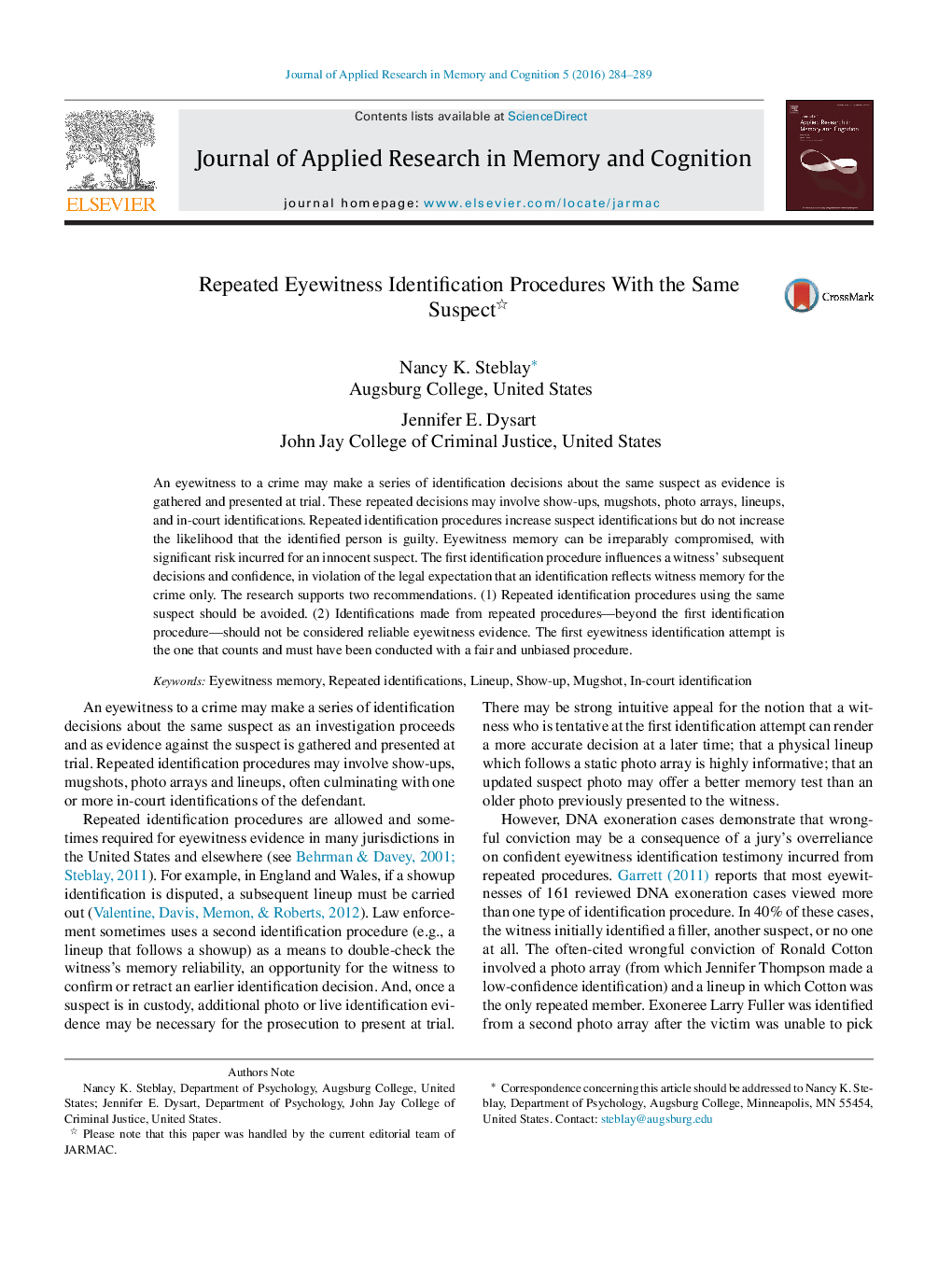| Article ID | Journal | Published Year | Pages | File Type |
|---|---|---|---|---|
| 5034044 | Journal of Applied Research in Memory and Cognition | 2016 | 6 Pages |
Abstract
An eyewitness to a crime may make a series of identification decisions about the same suspect as evidence is gathered and presented at trial. These repeated decisions may involve show-ups, mugshots, photo arrays, lineups, and in-court identifications. Repeated identification procedures increase suspect identifications but do not increase the likelihood that the identified person is guilty. Eyewitness memory can be irreparably compromised, with significant risk incurred for an innocent suspect. The first identification procedure influences a witness' subsequent decisions and confidence, in violation of the legal expectation that an identification reflects witness memory for the crime only. The research supports two recommendations. (1) Repeated identification procedures using the same suspect should be avoided. (2) Identifications made from repeated procedures-beyond the first identification procedure-should not be considered reliable eyewitness evidence. The first eyewitness identification attempt is the one that counts and must have been conducted with a fair and unbiased procedure.
Keywords
Related Topics
Social Sciences and Humanities
Psychology
Applied Psychology
Authors
Nancy K. Steblay, Jennifer E. Dysart,
